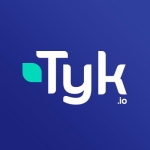What is our primary use case?
Since we built our product around APM, our clients use it directly. They find APM to be a simple and straightforward solution that fulfills all their API management needs.
Our clients use APM because it's a SaaS-based solution that comes with Azure Stack-managed services, making it easy for us to use and fulfill all their use cases.
How has it helped my organization?
We are actually partners. We built our product on top of APM and provide it to our customers.
What is most valuable?
API gateway-related features were fulfilled by APIM. So those features, we are completely leveraging for our solution, like throttling. It is fair and easy. It's a low-code, no-code model of API hosting.
What needs improvement?
There is room for improvement in the user interface and workflow for hosting APIs, especially third-party APIs.
Another area of improvement is the pricing model. The solution has an add-on cost, and if we want to leverage some of the features, we are forced to buy it. So, cost-wise, it's not ideal.
For how long have I used the solution?
I have been working with this solution for one and a half years. There isn't really a specific version since it's a managed service in the cloud. However, with Apigee, there are different versions available, as it can be hosted on-premises. But for APM, it's only available in Azure as a managed service.
What do I think about the stability of the solution?
I would rate stability a nine out of ten.
What do I think about the scalability of the solution?
I would rate the scalability a nine out of ten. It can host it in different regions, and we can point to the same set of backups and try to expose the APIs. Our current customers are in the medium category that's why I rated scalability a nine.
How are customer service and support?
We have a strategic partner for technical support, and they are very responsive.
How would you rate customer service and support?
How was the initial setup?
I would rate the initial setup an eight out of ten, where one is difficult and ten is easy. Previously, we were using Apigee, so comparing it to that, it's cloud-specific and opens the gateway. So there were some challenges.
What about the implementation team?
The deployment was quick. The deployment of this product was managed by a manager, so once you set it up, it has a quick turnaround time.
We used the Azure deployment model and followed the recommended steps for posting the APIs, and also followed the Azure recommended layer for deployment.
What's my experience with pricing, setup cost, and licensing?
Compared to Apigee, which is a one-time cost for on-prem, this solution is cloud-specific and a managed service. So cost-wise, it's comparatively expensive. I would rate it eight out of ten, where one is low and ten is high.
Moreover, there are additional costs to the standard licensing fees. We have to purchase four to five managed services around API to use it. For example, we use the express route and key vault, and we have to purchase those features along with API.
Which other solutions did I evaluate?
We explored different options and found that APM was the most suitable for our scenarios.
What other advice do I have?
Overall, I would rate it eight out of ten. The reason is, as I mentioned earlier, it is best suited for our use case. One reason is that the product is only available in Azure. So, we are leveraging multiple managed services and building the product around that. Additionally, we select it according to the customer's needs. The hosting API workflow needs to be improved.
Disclosure: My company has a business relationship with this vendor other than being a customer. partner






















